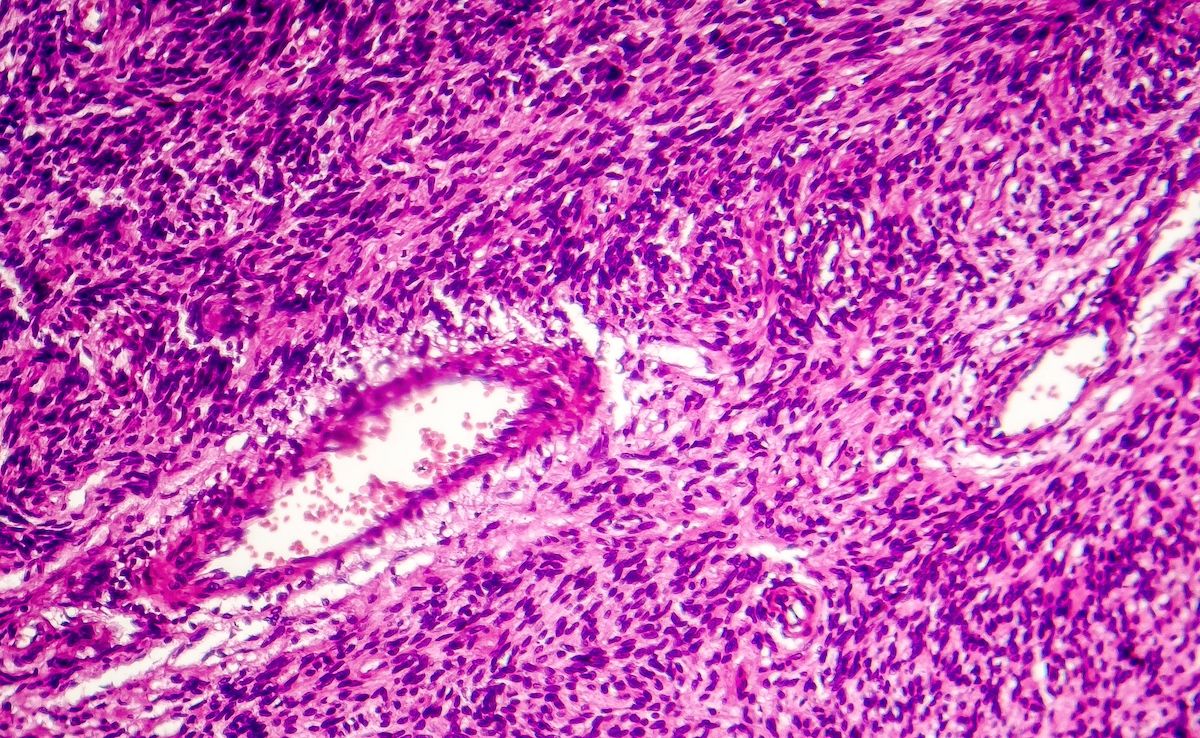- Center on Health Equity & Access
- Clinical
- Health Care Cost
- Health Care Delivery
- Insurance
- Policy
- Technology
- Value-Based Care
Trial Data Yield Risk-Based NRSTS Treatment Strategies
A new analysis based on two prospective trials helps clarify the roles of chemotherapy and radiotherapy.
A new report affirms that surgical resection is generally sufficient for pediatric patients with low-risk non-rhabdomyosarcoma soft tissue sarcoma (NRSTS) and suggests that patients with completely resected high-risk tumors do not necessarily benefit from adjuvant radiation.
The findings, which were published in Pediatric Blood & Cancer, were based on findings from 2 trials that were designed to help develop a new risk-stratification system and compare different therapeutic regimens for patients with different risk profiles.1
Image credit: Dr_Microbe-stock.adobe.com

Corresponding author Monika Sparber-Sauer, MD, of the Stuttgart Cancer Center, in Germany, and colleagues, wrote that the current standard of care for pediatric NRSTS is based around surgical resection.
“Primary tumor resection with wide margins in the NRSTS treatment mainstay, and is safe without further adjuvant treatment for low-risk disease,” they wrote.
In unresectable tumors, neoadjuvant radiotherapy and/or chemotherapy can be used in hopes of facilitating later resection, as these patients have a low chance of a cure, they added. However, they said the role—or lack thereof—of adjuvant chemotherapy or radiotherapy in patients with primarily resected NRSTS remains an open question.
The new study is based on data from two prospective trials, the CWS-96 and CWS-2002P trials, both of which were designed to limit chemotherapy and radiotherapy by using a risk-based treatment strategy.2,3
Between the 2 trials, a total of 1,249 patients with localized NRSTS were enrolled (483 in CWS-96 and 445 in CWS-2002P). In the former, patients were risk-stratified based on Intergroup Rhabdomyosarcoma Study (IRS) group, histology, and grade. In the CWS-2002P trial, patients were stratified based on IRS group, lymph node status, tumor histology, and tumor size.
In both trials, low-risk patients were treated with surgical resection alone. Standard-risk patients in both trials were given hyperfractionated accelerated radiotherapy (HART) by 44.8 Gy. In CWS-96, adjuvant chemotherapy with vincristine, actinomycin-D, ifosfamide, and 160–240 mg/m2 adriamycin (VAIA) was added for high-grade tumors, Sparber-Sauer and colleagues said.
High-risk patients were given 6 cycles of VAIA in CWS-96 and an intensified adriamycin regimen (VAIA-III, 320 mg/m2 adriamycin) in CWS-2002P, along with delayed resection and/or 44.8 Gy radiotherapy. In some patients in CWS-2002P, maintenance treatment with cyclophosphamide and vinblastine was also given, the authors said.
Overall, the investigators said patients in the CWS-2002P trial had a superior 5-year overall survival (OS; 81% versus 73%; P = 0.024), which they said was partly a result of the CWS-2002P trial’s inclusion of a greater number of entities like fibromyxoid sarcoma, which have a lower metastatic potential. The investigators added that improvements in surveillance, imaging, and surgical techniques over time also likely affected the outcomes.
“We found that the IRS group alone was a strong predictor of EFS (event-free survival) and OS; despite incorporating multiple independent risk factors in CWS-2002P—including IRS, histology, lymph node size, and initial tumor size—no refinement to the risk-stratification system was achieved,” they said.
Though CWS-2002P had improved OS in general, Sparber-Sauer and colleagues said the higher dose of anthracycline used in that trial did not appear to improve survival.
Furthermore, they said low-risk patients who underwent surgery alone had a 5-year EFS and OS of 82% and 93% across both trials, suggesting that surgery alone is sufficient in most cases.
“One remaining question is the role of chemotherapy in standard-risk disease,” they said. That’s because while radiotherapy alone was recommended for standard-risk patients in the CWS-2002P trial, in real-world usage clinicians often gave both chemotherapy and radiotherapy, as was the recommendation in the CWS-96 trial. Thus, the authors said, it is not possible to draw clear conclusions.
Sparber-Sauer and colleagues concluded that in high-risk patients, clinicians should seek out entity-specific clinical trial data whenever possible.
“Where no clinical trial is available, vincristine and actinomycin-D can be omitted, and the ifosfamide/doxorubicin regimen should be used, preferably with a reduced anthracycline dose in postoperative chemotherapy cycles,” they wrote.
They added that their finding that high-risk patients undergoing R0 resection have a comparable prognosis to patients with high-risk disease who receive radiation following incomplete resection warrants further investigation.
References
- Heinz AT, Schönstein A, Koscielniak E, et al. Children and Adolescents With Localised Non-Rhabdomyosarcoma Soft Tissue Sarcoma: Results of the CWS-96 and CWS-2002P Prospective Trials With Reclassification of the Trial Data Incorporating the Recent Soft Tissue Sarcoma Registry. Pediatr Blood Cancer. Published online November 11, 2025. doi:10.1002/pbc.32159
- Sparber-Sauer M, Ferrari A, Kosztyla D, et al. Long-term results from the multicentric European randomized phase 3 trial CWS/RMS-96 for localized high-risk soft tissue sarcoma in children, adolescents, and young adults. Pediatr Blood Cancer. 2022;69(9):e29691. doi:10.1002/pbc.29691
- Koscielniak E, Blank B, Vokuhl C, et al. Long-term clinical outcome and prognostic factors of children and adolescents with localized rhabdomyosarcoma treated on the CWS-2002P protocol. Cancers (Basel). 2022;14(4):899. doi:10.3390/cancers14040899
